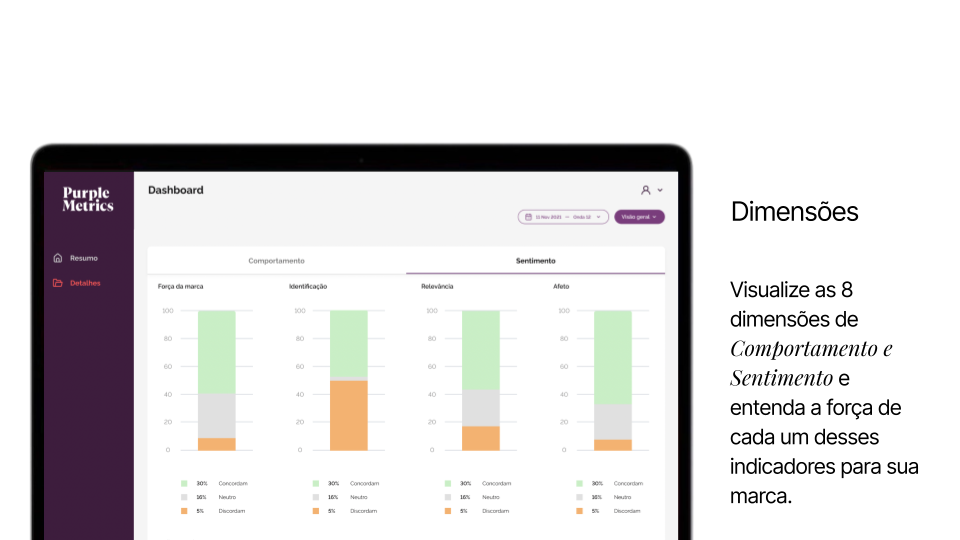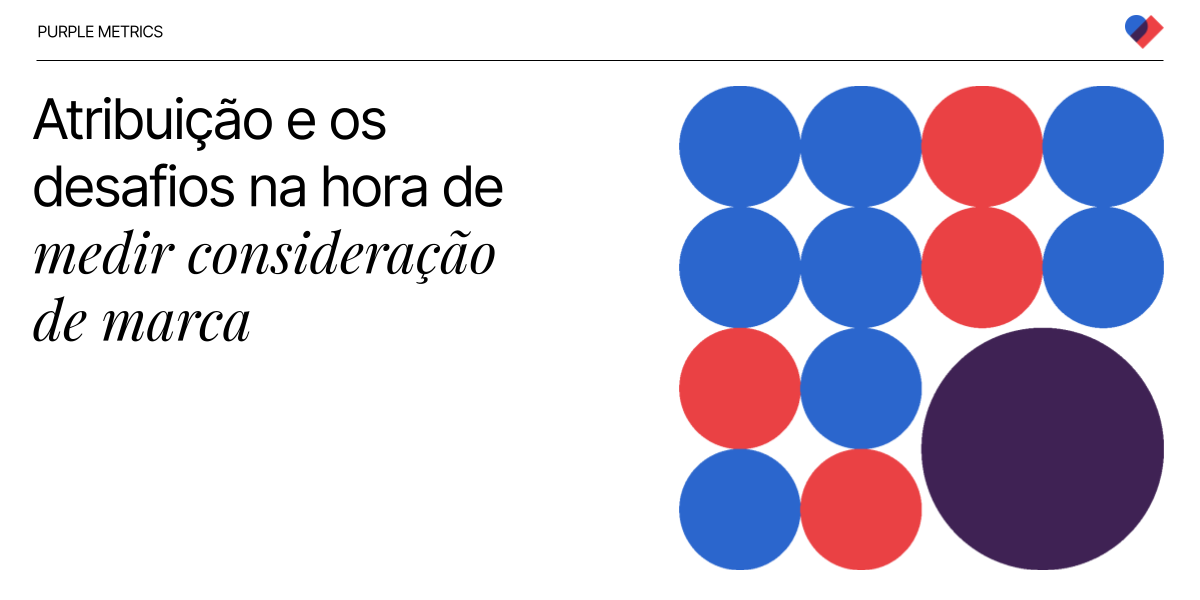Por Guilherme da Silva, marketing no Purple Metrics
The customer loop in the consideration step
The marketing journey doesn't always look linear like the marketing funnel. After knowing your brand, consumers can wander between learning more about their needs and what solutions the market offers.
After brand awareness, the consumer will compare your solution with others in the same category to understand the best fit with their habits and cost benefit. Depending on variables such as the value of the product, this oscillation can take a few hours or years. It can be just a peek at a clothing store, scrolling through e-commerce or, going a step further, trying on clothes or doing a 1-month free trial of software for a B2B brand.
"How people decide what to buy lies in the ‘messy middle’ of the purchase journey"
After making the consumer aware of his brand, the marketing, branding, growth manager has the power and the role of shortening this path between brand awareness and the shopping experience.
And the number of consumers at this stage is not irrelevant: A study by the Linkedin B2B Institute shows that this portion can reach 95% of the public, while only 5% would be really inclined towards and at the time of purchase.
The 95-5 Rule (Source: Linkedin B2B Institute)
The challenge is that the attribution-based marketing metrics we typically use don't realistically measure this stage where the consumer swings between exploration and evaluation.
The marketing (or performance) funnel is a simplification that in recent years has summarized the complex journey of consumption in a linear model.
And this impression of linearity is what makes it difficult for Marketing teams to get budget for branding: the attribution results make the marketing budget focus only on performance, especially on ads.
The brand effect on consumers is more the result of the mix of multiple touchpoints than the performance of a single channel analyzed separately. That is why it is so difficult to measure this brand effect in a transversal way that permeates the entire mix of channels.
Brand effects at the consideration stage: is attribution a problem or a solution?
When we look at the brand awareness indicators, we have some possible options to know if the brand is already present in the consumers' memory:
- Brand Recall
- Ad Recall
- TRP
- Reach
- Frequência
The shopping experience stage also has its indicators:
- Conversion
- Visits
- Bounce rate
- CTR
- CPA
In the consideration stage (or exploration and evaluation, following the messy-middle model), marketing teams have been using some indicators as a proxy, based on the linear model of the performance funnel:
Google Search lift
Direct Search lift
- followers and categorization of social media mentions
Guta Tolmasquim, CEO of Purple Metrics, talks more about the issue with attribution in this TikTok post.
But measuring website visits does not reveal how much consumers are already involved with the brand to the point of being predisposed to purchase, nor is it the best way to know which brand attributes most resonate in their memories.
Nor can measuring the number of followers or positive comments on social media be statistically correlated with purchase intention.
As long as marketing teams show social media screenshots at end-of-month results meetings as an indicator of success in proving the brand's effect on consumers (or any other channel analysis separately, without having a cross-sectional analysis of the marketing mix), strategies such as investing in influencers, having high quality audiovisual content for YouTube or TikTok, loyalty campaigns or the CEO's time as the brand's spokesperson will be put aside. What is not measured does not become a priority.
Many brands that adopt these strategies to measure brand consideration have struggled to prove an ROI that comes before the last click or conversion. We need an indicator (or set of indicators) that measures the effects that brand attributes have on consumers and is predictive of business results.
Building what's in the consumer's head and heart about your brand after the brand awareness stage is the greatest achievement of someone who works every day managing a brand. The result of this endeavor is very valuable data and has to be measured properly.
Measuring Brand Consideration with Consumer Insights
Doing research with those who already have brand awareness has been a way of knowing how the brand's attributes resonate with consumers, and what they consider doing based on these effects; know your intentions in relation to that brand.
Part of the intent of doing great consumer research and getting really actionable brand insights for marketing strategy is:
- Define a sample set of audiences based on statistics and who already have access to the brand's channels
- Define the best questions to ask, mitigating cognitive biases
- Build and spread the questionnaire to consumers
- Ensure that the survey is attractive enough to have the best response rate
- Tabulate the responses and do all the correlations between the numbers to generate key coefficients
- Create insights based on correlations and comparisons
- Build a presentation to expose these insights visually and in a shareable way among the company's decision makers
- Do all this repeatedly in order to understand how the brand's actions change the indicators
Purple Metrics is a way to achieve this result through technology as an ally.
With Purple Metrics, a widget installed in its own channels asks consumers every day what they think and feel about the brand, generating indicators of sentiment and behavior intention.
In addition, with the questions asked, it is possible to know and measure which brand attributes most resonate and influence consumer behavior.
The Widget can be installed on the homepage of the website, landing pages or other bases. The survey can also be sent segmented to consumers' email addresses.
With Purple Metrics marketing managers are able to know every week what consumers think at the brand consideration stage: what feelings they have, what intentions and what brand attributes are strongest in their memories. Insights arrive in the form of sentiment, behavior and attribute metrics that can be correlated with each other to show which of them most influence the consumer's purchase intention.

Monitoring branding metrics has helped teams from brands such as Linus, Conta Azul, Daki and others to have recurring management of brand effects in the consideration stage.
Purple Metrics has helped these marketing teams better understand the impact of their own work, measure the return that branding brings in the consideration stage, and optimize their time and money by being more strategic in the use of brand assets and attributes in what really brings business results.
If you are interested in starting to measure your brand strength with Purple Metrics and define your growth indicators in branding and communication efforts, visit our website and book a demo with our sales team.

